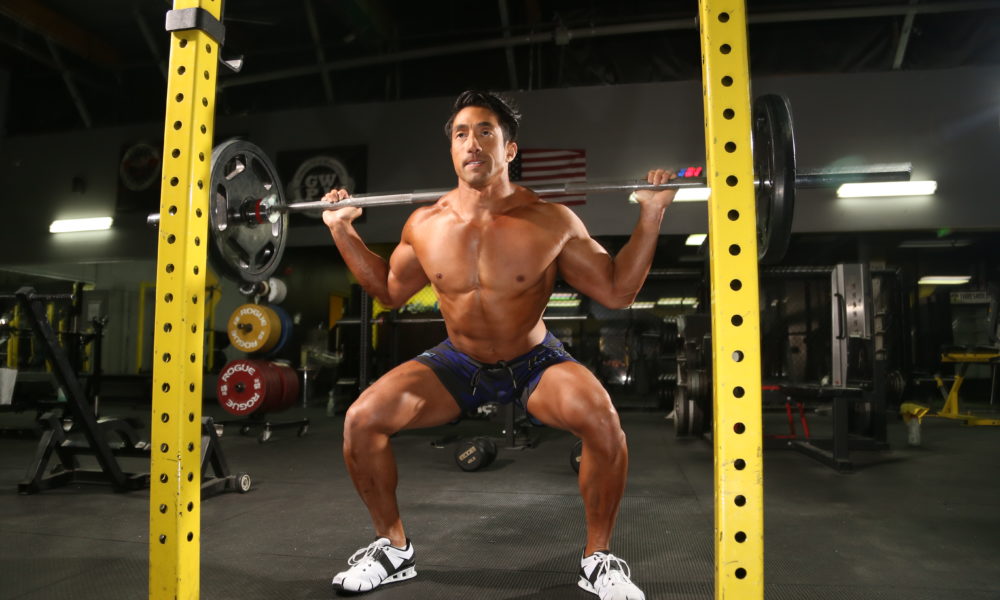

Every exercise we do in our workouts provides us with many benefits. . For example, bicep curls are intended to isolate the body movement of elbow flexion. Key muscles that work in a bicep curl include the biceps brachii, brachialis, and brachioradialis. Additionally, stair machines engage every major muscle in the lower body such as the glutes, hamstrings, quadriceps, abs, and calf muscles.
One popular, eclectic exercise that targets different muscles depending on what kind you are doing is squats. There are about 45 variations of the squat exercise that allow you to precisely hit that spot. The variations to squats include but are not limited to, basic squats, wall squats, side squats, front squat, back squat, jump squat, hack squat, and box squat.
Because there are so many variations of the exercise, there has always been a debate around which is more beneficial, between the front squat or the back squat. Front squats are performed by loading a barbell to your front side and resting it on your shoulder. Next, you underhand grip a bit outside your shoulder, pushing your elbows up. To ensure that you resist the pull to fall forward, ensure that your knees are out and your chest stays up when starting to squat.
In order to successfully execute a back squat, you must load the barbell behind your head and rest it on your traps. From there, stand with your feet shoulder-width apart, chest up and toes pointed out. While bending your knees, sit back on your hips and lower your glutes toward the floor.
Why You Should do Squats
Squats aren’t only for athletes. They are on the easier side when it comes to learning and mastering form. This is why it is a top recommended exercise for targeting your lower body especially if you want to focus on your glutes and quadriceps.
You may be wondering what else does squats work. The easier question you should be asking yourself is what squats are not working. This exercise also benefits the strengthening of core muscles, hip muscles, calves, hamstrings, and obliques. Squats are also in the field of burning calories that can help in weight loss.
Whether you are a beginner or expert, incorporating squats into your workout can also contribute to long-term health. It reduces your chances of injuring your knees and ankles all while strengthening your tendons, ligaments, and bones surrounding the leg muscles.
If you are looking for a solution to make your knees more stable, consistent squat exercises can do the trick. Especially as you grow older, squats improve your flexibility, boost bone mineral density, and are relatively basic to perform.
As a bodybuilder, it is important to dedicate time and effort to every single muscle on your body so as not to seem deficient in one area. Squats are a great exercise to work a bunch of critical muscles at once. While strengthening muscle, you can also find extra health benefits when doing squat exercises.
Leg Muscle Anatomy
There are different compartments of the leg that hold muscles meant to perform different functions. Each of these functions is crucial in the mobility and performance of the lower body. Although a squat exercise can serve to target a particular muscle in the lower leg, they all work together to function correctly.
While performing a parallel squat, you are performing in three planes of movement. These planes are called transverse, frontal, and sagittal. The transverse plane splits the upper body from the lower body. The frontal plane splits the body into front and back sections. Lastly, the sagittal plane splits the body into left and right sides.
The movement of a squat works at the hip joint. In the sagittal plane, you see hip flexion and extension. The frontal plane shows hip abduction and adduction. And the transverse plane shows the internal and external rotation of the hip. The main hip muscles, though, that are involved in a proper squat are the gluteus maximus and hamstrings.
The gluteus maximus works eccentrically and helps to stabilize your muscles during a squat. This stabilization is required to prevent any abnormal movement of the knee or pelvis. The hamstrings, on the other hand, are fully active during a squat movement. This is because it is the muscle attaching over the hip and knee. The hamstrings are most active eccentrically, though.
As for the knee joint, the primary knee muscles that are active during squats are the quadriceps group. The quadriceps group is made up of the rectus femoris, vastus medialis, vastus lateralis, and vastus intermedius. They concentrically work during knee extension and eccentrically during knee flexion.
Ankle mobility is also important when performing a squat because it helps with balance and a fuller range of movement. The primary ankle muscles involved in a squat are the soleus and gastrocnemius.
Front Squat Benefits
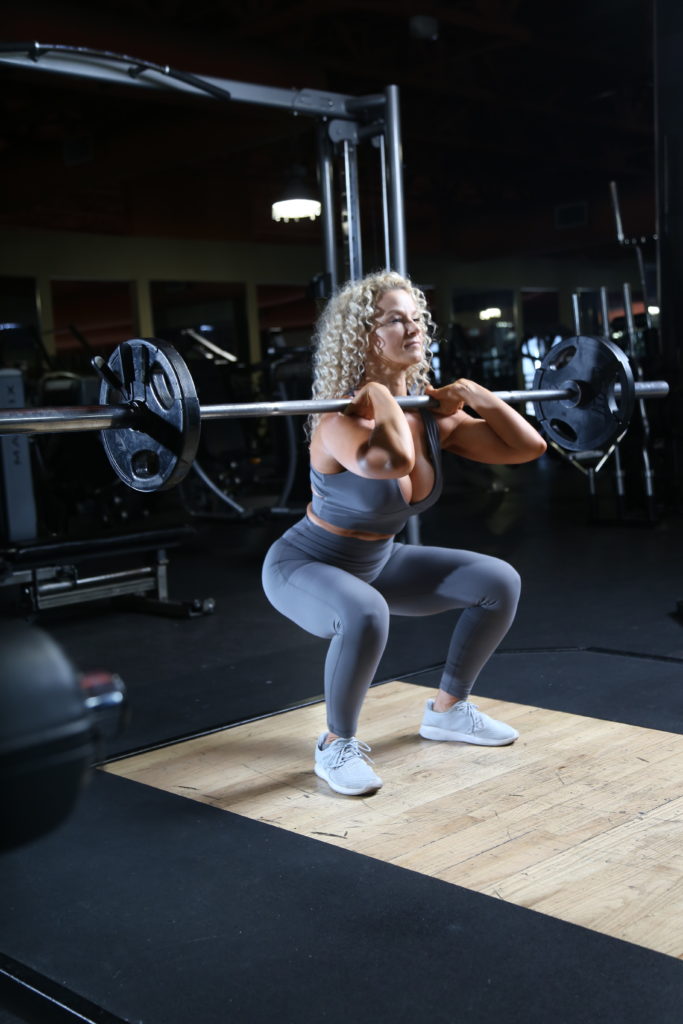
Determining which exercise is best for you depends on what you want to work on. Front squats tend to work your core, upper back, and quads. This kind of squat is easier on the lower back due to the positioning of the weight. Unlike other kinds of squats, it does not cause compression of the spine.
Another benefit is that, if you are looking to strengthen your muscles, front squats may help lifters in avoiding lower back or knee pain. Less pain when lifting equals more consistent lifting. They are also known to be more effective in overall muscle growth when it comes to quad size. Although back squats are more likely to activate your hamstrings, back squats activate the quads.
Olympic lifters and CrossFitters are typically more interested in front squats. This is because a front squat is translatable to the improvement of the clean and jerk as well as the snatch.
Front squats are also advantageous when it comes to rehabilitation purposes or beginner gym-goers. Using lower weights as well as the natural trunk posture creates better circumstances for those who are coming back from an injury or trying to take it easy in the gym.
Overall, front squats are best for helping flexibility, holding yourself accountable, building muscle, emphasizing the quadriceps, improving other lifts, and are typically considered safer than back squats.
Back Squat Benefits
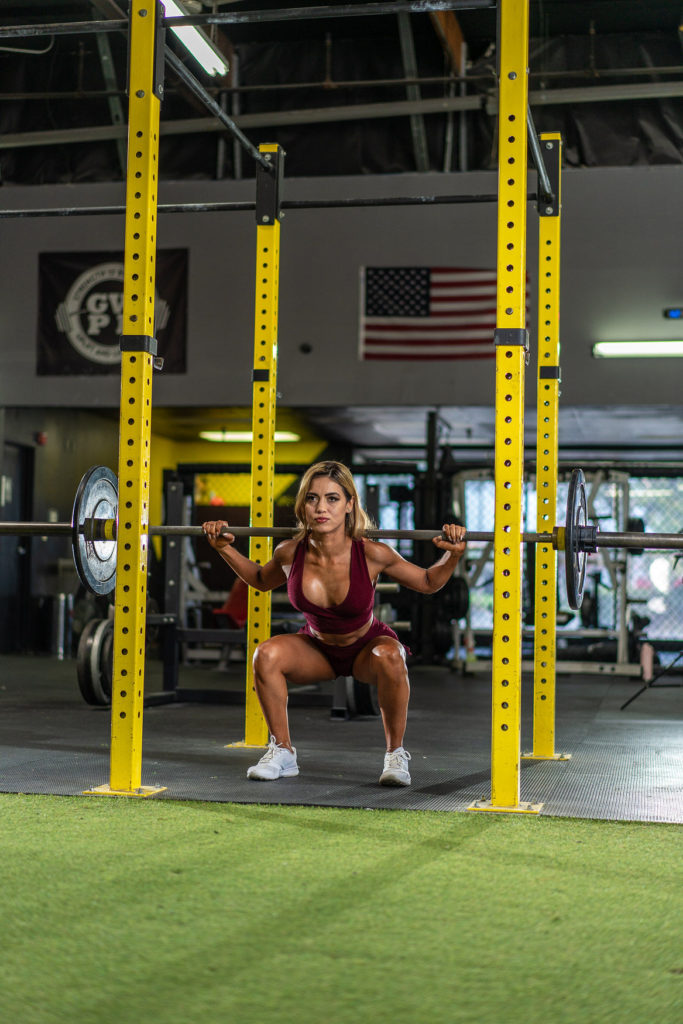
As mentioned before, customizing your workout to fit your body type, your goals, and your capabilities is the most important part of exercising. Back squats mainly challenge your legs, glutes, and hamstrings.
If you are focused on improving your strength, you may want to prioritize back squats. Both variations are equal in overall muscle activation. The only reason why back squats may be more effective in strength gain is because of the fact you will be able to lift more. Typically, people are not able to front squat at the same weight as their back squat.
Powerlifters typically choose to focus on back squats in competition lifts. This does not mean that incorporating front squats won’t help in the flexibility, quad strength, and upper back dexterity that are involved in the sport.
The back squat is effective in improving overall strength. It also improves posture and balance, trains the posterior chain, builds muscle, maintains flexibility, and is usually used to exercise everything from endurance to power. People who are a bit more experienced or relatively strong opt for back squats because of these benefits.
Disadvantages of Both
There are a few disadvantages to both back squats and front squats. Back squats usually cannot be performed if you have back problems. These kinds of squats put more weight directly against your spine, causing possible compression of the spine.
Beginners are not recommended to do back squats alone for the first time because of the danger that comes with incorrect technique. Because of this, it takes time to learn and become fully equipped with the skills to perform a proper back squat.
Another disadvantage to back squats is that they can be uncomfortable to perform. If you are not used to the weight, form, or technique, your workout will not be as fulfilling as it should be.
A disadvantage to front squats is the inability to hold as much weight as you would in a back squat. It is just not usual for someone to have the same front and back squat maxes. It is also less likely to train the posterior chain of the body.
Another disadvantage is that front squats can yield results, but it doesn’t produce desired results as quickly and to the extent that back squats do. They are great in muscle maintenance, but they will probably not fulfill your goals if you were to do this exercise alone.
Safety Measures
Performing a squat can be dangerous, especially when using any kind of weight. It is important that you take caution and do the exercise correctly to prevent any injuries. There are two main keys to performing the squat correctly.
Firstly, it is crucial to keep your lower back only slightly arched when squatting. Secondly, you should limber up your body before doing squats. This is because sitting for too long and then performing a squat may affect your flexibility and the discs in your body.
You should not let your knees be more forward than your toes. It is also helpful to keep your knees turned out a little so that they do not move together.
When using weights, as with any weight, it is important to know your limits. Especially in the back squat, it is risky to carry too much weight because of the risk of falling and injuring your shoulders, back, and legs.






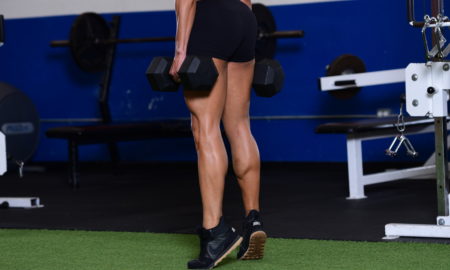
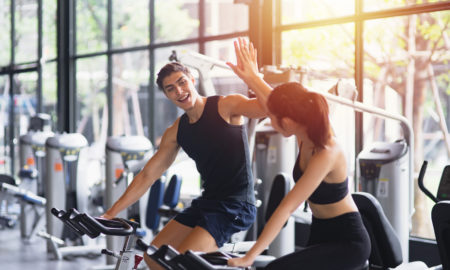














You must be logged in to post a comment Login